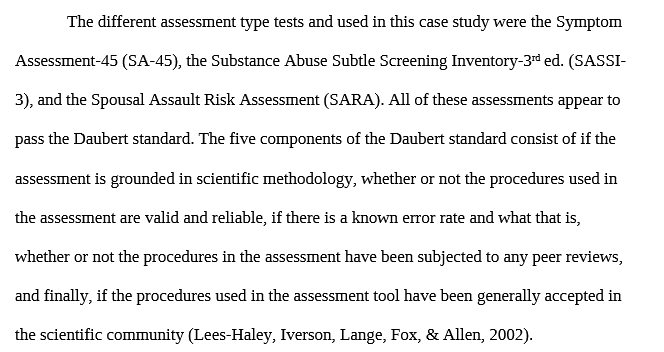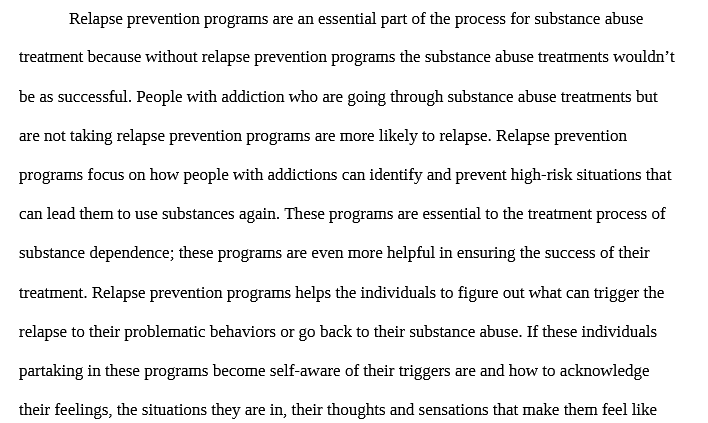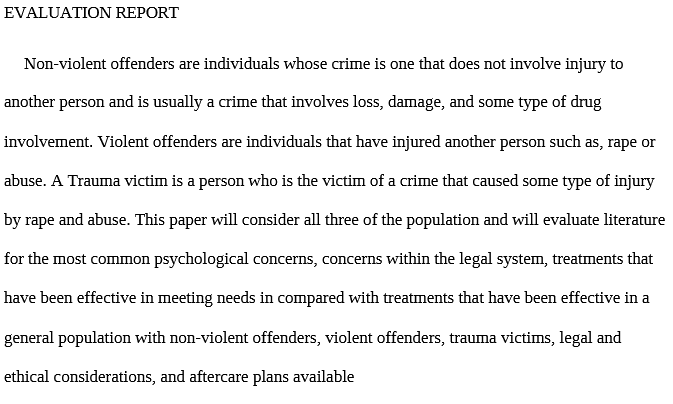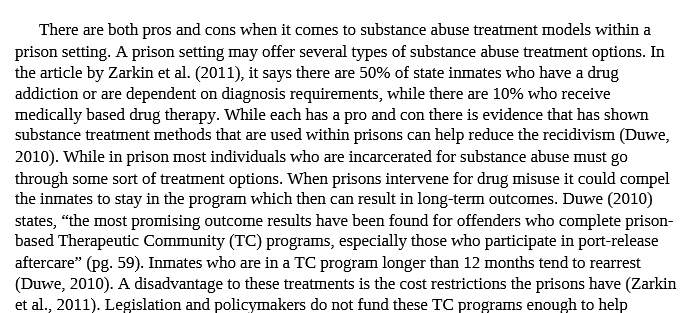Psychology in the Courtroom 2-2 Final Project Milestone One.docx- Snhu
$3.99
Psychology in the Courtroom 2-2 Final Project Milestone One.docx- Snhu
Purpose of Referral:Ms. C was referred by the state courts for a mental health evaluation to determine her substance dependency potential relative to Child Protective Services (CPS) as well as her community supervision for probation. The information gained from the evaluation will be used at her upcoming CPS review as well as her probation hearing.Procedures:The different assessment type tests and used in this case study were the SymptomAssessment-45 (SA-45), the Substance Abuse Subtle Screening Inventory-3rded. (SASSI-3), and the Spousal Assault Risk Assessment (SARA). All of these assessments appear to pass the Daubert standard. The five components of the Daubert standard consist of if the assessment is grounded in scientific methodology, whether or not the procedures used in the assessment are valid and reliable, if there is a known error rate and what that is,whether or not the procedures in the assessment have been subjected to any peer reviews,and finally, if the procedures used in the assessment tool have been generally accepted in the scientific community (Lees-Haley, Iverson, Lange, Fox, & Allen, 2002)The main assessment tool utilized to determine Ms. C’s substance dependency level was the Substance Abuse Subtle Screening Inventory- 3rdedition (SASSI-3).
Description
Psychology in the Courtroom 2-2 Final Project Milestone One.docx- Snhu
Purpose of Referral:Ms. C was referred by the state courts for a mental health evaluation to determine her substance dependency potential relative to Child Protective Services (CPS) as well as her community supervision for probation. The information gained from the evaluation will be used at her upcoming CPS review as well as her probation hearing.Procedures:The different assessment type tests and used in this case study were the SymptomAssessment-45 (SA-45), the Substance Abuse Subtle Screening Inventory-3rded. (SASSI-3), and the Spousal Assault Risk Assessment (SARA). All of these assessments appear to pass the Daubert standard. The five components of the Daubert standard consist of if the assessment is grounded in scientific methodology, whether or not the procedures used in the assessment are valid and reliable, if there is a known error rate and what that is,whether or not the procedures in the assessment have been subjected to any peer reviews,and finally, if the procedures used in the assessment tool have been generally accepted in the scientific community (Lees-Haley, Iverson, Lange, Fox, & Allen, 2002)The main assessment tool utilized to determine Ms. C’s substance dependency level was the Substance Abuse Subtle Screening Inventory- 3rdedition (SASSI-3).
Psychology in the Courtroom 2-2 Final Project Milestone One.docx- Snhu
Ms.C’s results for this assessment tool were 70 for the Face-Valid Other Drugs scale(FVOD), 55 for the Face-Valid Alcohol scale (FVA), and 81 for the Obvious Attributes Scale (OAT). These results suggest Ms. C is continuing to abuse drugs and alcohol currently. The SASSI-3has two parts combined into one assessment: some very valid and upfront questions regarding substance and alcohol abuse as well as questions that are more subtle and discrete in nature to weed out and pinpoint individuals that have underlying issues with substance and alcohol but are not willing to admit these issues. AA and NA will help Ms. C meet new people who are a good influence on her sobriety and who can also relate to her struggles she has faced. The programs will help offer her new strategies to cope with triggers and urges to use drugs and alcohol, find sober activities and find activities that are fun to do without drugs and alcohol. Either program,or both programs, will help Ms. C stay focused on her sobriety if she is willing to work the program to the best of her ability.
Psychology in the Courtroom 2-2 Final Project Milestone One.docx- Snhu
Attending regular meetings on a weekly basis will help her out tremendously on the long journey to a sober life.Another important treatment recommended for Ms. C is Cognitive Behavioral Therapy(CBT). This treatment will be the most important part of her treatment plan as it is taught in PHP and treatment facilities to not only help with addiction, but to help with personal relationships.CBT is a treatment that helps individuals create short term goals to change patterns of behavior and thinking.CBT is a therapy that will help individuals identify negative thinking patterns that can cause self-destructive behaviors and negatively influence their behaviors. The way this therapy will help Ms. C with her addiction is to help her identify negative person, places and things that may have led to drug use in the past. CBT is not a quick process to learn how to change thinking patterns and behavior. It could take up to 6 months to notice a change in emotions and attitude and that is why it is important for Ms. C to attend AA and NA meetings for support and successfully complete PHP to develop coping skills as she turns her life around.
Psychology in the Courtroom 2-2 Final Project Milestone One.docx- Snhu
- PSY 211 – Lifespan Development (5015 Documents),
- PSY 215 – Abnormal Psychology (4335 Documents),
- PSY 108 – Introduction to Psychology (3759 Documents),
- PSY 223 – Statistics for Psychology Research (2652 Documents),
- PSY 216 – Psychology of Personality (1841 Documents),
- PSY 510 – Research Methods (1748 Documents),
- PSY 520 – Research Methods in Psychology II (1469 Documents),
- PSY 257 – Psychology (1451 Documents),
- PSY 310 – Criminal Psychology (1393 Documents),
- PSY 200 – FOUNDATIONS OF ADDICTIONS (1379 Documents),
Only logged in customers who have purchased this product may leave a review.







Reviews
There are no reviews yet.